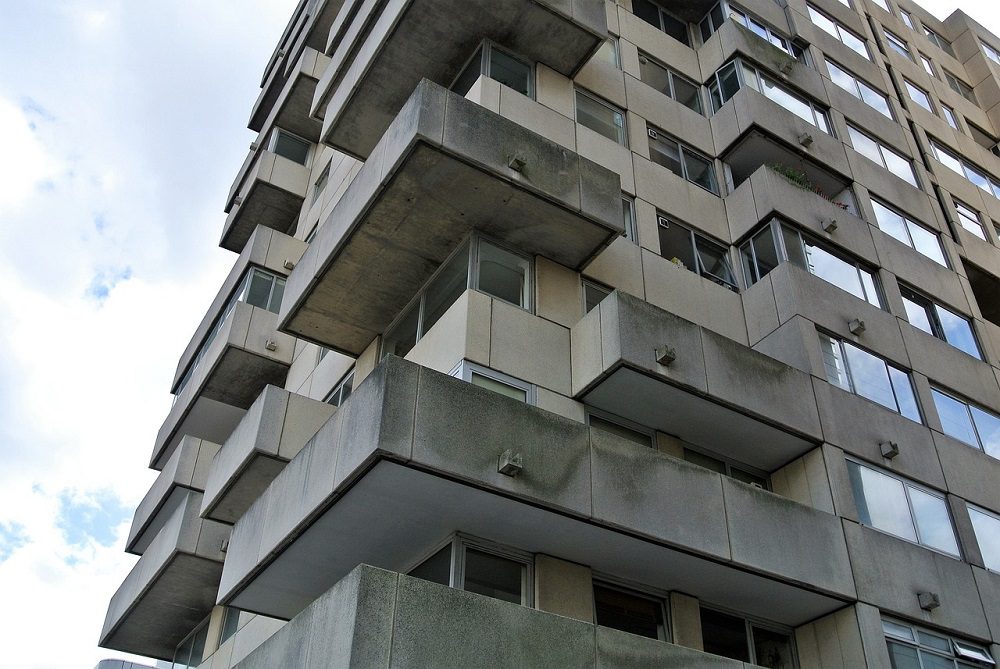
Lightweight RAAC concrete used in the construction of a swathe of schools and public buildings has become the latest political headache for the government; will social landlords feel the pain too? Tim Clark reports
The historical use of lightweight RAAC concrete in the construction of a swathe of schools and public buildings has become the latest political headache for the government, but
As crises go, the news that hundreds of schools across England, as well as NHS hospitals and other public buildings, may need to close due to crumbling concrete, is one the current government could do without.
Reinforced Autoclaved Aerated Concrete, which is known as RAAC, was widely used between the 1960s and 1990s and can, if faulty or in disrepair, collapse without warning.
RAAC is a form of concrete which is made from a combination of cement, lime, water and what is known as an aeration agent. That agent lowers the density of the concrete and makes it lighter weight.
The process speeds up the manufacturing turnaround of pre-cast concrete, however the high volume of air within the pre-cast panels means that moisture, if it gets into the panels, can degrade the structural strength of the concrete, risking failure without necessarily any warning signs that the material is stressed.
The concerns, and recent findings from a National Audit Office report published in June, which said that up to 572 schools could be affected, was followed by subsequent action to close schools by the government. This has led to calls from MPs and public bodies across the country to address the risks, as well as a political row over who is at fault for the problem.
However as news spreads that more and a wider number of buildings could be affected, is the RAAC issue one which housing associations need to pay more attention to?
A problem too close to home?
The Social Housing Action Campaign (SHAC) has called for more information to be provided by housing associations on any potential problems.
“It is possible that RAAC is present in housing association homes, particularly tower blocks, but as yet no information has been published either by landlords or their representative body, the National Housing Federation,” the body said.
“SHAC is encouraging concerned members to contact their landlords, and if necessary ask their local councillors and MPs to intervene if they don’t get swift answers. Unlike public bodies, housing associations are not subject to the Freedom of Information Act.
“Tenants and residents are therefore dependent on the goodwill of landlords to keep them informed.”
Many housing association’s gained legacy stock from local authorities and may have issues with older buildings. A large number of social homes were built during the key period that RAAC was used. This may not mean that many of those homes are at risk, even if RAAC is found. It is possible that the RAAC which is used is in perfectly safe condition, however not knowing whether RAAC is in a housing association’s estate is a key problem.
The Local Government Association (LGA) says that it has ordered councils to review whether any buildings – including social housing – contain RAAC, and had been calling for more intervention since 2018 in the issue.
Steve McSorley, director of the structural engineering consultancy Perega, said that RAAC was less likely to be prevalent in 1960s tower blocks because “it was rarely used in anything more than three storeys high – but it’s possible it will be found in some roofs.”
“Ensuring the safety of tenants and residents should be the highest priority for every landlord.”
Fiona Macgregor
The Regulator for Social Housing (RSH) has also paid attention to the issue. On Thursday the regulator sent a letter to all registered providers stating that its current understanding was that RAAC wasn’t widespread in the sector, but it “may be present in a small number of buildings” dating from the 1950s to the 1980s.
RSH chief executive Fiona Macgregor said : “Ensuring the safety of tenants and residents should be the highest priority for every landlord.
“We expect landlords to ensure that they have a good understanding of their homes, including building safety issues and whether homes contain RAAC components and the risk to tenant safety arising from these; that you develop proportionate mitigation and remediation plans where required; and seek suitably qualified advice where necessary.”
Inaction is not an option
A key problem for social landlords is whether they have insurance policies which will still be valid if RAAC is found on their properties.
Greg Carter, insurance law specialist at Winckworth Sherwood warns that housing associations need to urgently check building specifications and drawings for the use of RAAC, and conduct structural surveys if it is found.
“Where social housing providers have not already done so, they should urgently check as-built drawings and specifications, and if RAAC is found to have been used commission structural surveys to verify its condition and any remedial works,” he says.
“Unlike schools, no nationwide survey of social housing has been conducted and the extent of the problem is unknown. Thorough checks of housing stock will be the only way to fully understand the size and scale of any problems.
“Where RAAC is discovered and is defective, social housing providers may be able to claim the cost of remedial work on building or other insurance policies. There will often be a 30-year limit on such claims and the success of any claim will vary depending on the wording of those policies.”
Following the Grenfell tragedy, insurers may opt to exclude RAAC claims, Carter says, which would be a disappointment for the sector’s landlords as well as tenants.
“However social housing providers should not need reminding that they have a legal responsibility to manage their buildings, to meet repair and maintenance obligations and meet relevant health and safety regulations. Inaction is not an option,” he adds.
More to do
What other action could be still be taken?
The government is currently focussing its efforts on schools, and possibly the NHS estate, however SHAC believes it can do more in the voluntary sector also.
“Government also needs to introduce emergency legislation requiring all landlords to inspect and if necessary repair homes affected by crumbling RAAC,” it says. “Meaningful enforcement, so far lacking in relation to housing issues, is also essential.”
The government has to a certain extent, despite failing to deal with the crisis in schools, begun to take action across the wider public estate.
In June it launched an inquiry into the concrete as well as taking a look at the government’s own £158bn portfolio of buildings.
In a briefing on 8 June, the LGA stated: “Central government is looking to expand RAAC identification and remediation into the wider public estate.
“The Office of Government Property (OPG) will be convening a working group in which there will be a designated representative from each government department who is responsible for the identification and remediation of RAAC in buildings owned by that department. This group will also be attended by key stakeholders including the LGA.”
The sector could also take the initiative itself, with guidance on best practice or next steps found in places such as NHS England, which in March this year recommended that Trusts take a proactive approach to dealing with the problem.
Richard Love, head of building consultancy at Carter Jonas, wrote that taking up the task may not be an all-encompassing undertaking similar to the intrusive surveys needed to solve the cladding crisis.
“While there is no deadline for assessing public sector estates for RAAC, mitigating the risk of failure and any potential damage it would cause is vital,” he says.
“Although the implications of finding RAAC in an estate are concerning, assessing the presence and condition of it might not necessarily involve vast sums in replacement costs if found. Data analysis and satellite imagery can quickly rule out a lot of buildings.”
The Institution of Structural Engineers’ RAAC Investigation & Assessment report released in February 2022 also recommends some mitigation measures that may help landlords, such as “enhanced end bearing to mitigate against known deficiencies or unknown/unproven end bearing conditions”, as well as adding in remedial support. Full rebuilds of estates may not be the outcome of any RAAC findings.
Love says that when contracted to survey Herefordshire’s education estate, it found three buildings out of 1,270 that were inspected in need of some sort of remediation or where considered a concern.
“The main thing to remember,” he says. “Is that prevention is better than cure.”
Image credit: Stock photo courtesy of Pixabay
Read next: Older people trapped by lack of suitable homes
Are you a social housing professional? Sign up for a FREE MEMBERSHIP to upload news stories, post job vacancies, and connect with colleagues on our secure social feed.



